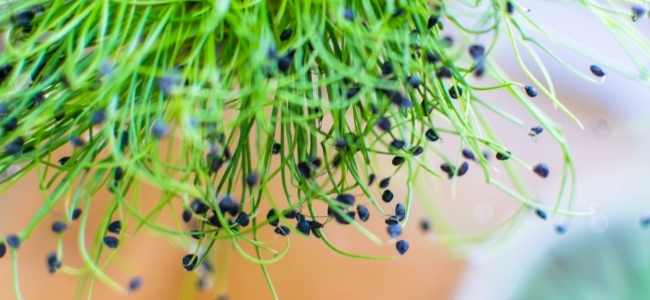Micro vegetables are typically known as vegetables of the future. They are well-known for their impressive nutritional properties. These vegetables are also relatively easy to grow and harvest. Micro vegetables are smaller versions of the common vegetables we consume daily. They are the quickest food crop that even urban gardeners can grow.
For the farmers and gardeners looking to make their work easier, Peruzzo has you in mind. They have the ideal machines for almost any agricultural use. The company also cares and maintains the public green spaces. Peruzzo is an award-winning firm that looks to satisfy the customers. They are experts in matters agriculture so if you have any issue on how to mow your garden, uplift your space, or looking for a Peruzzo flail mower you could always talk to them.
If you lack sufficient space or probably still a novice in gardening, these vegetables are the easiest you can start with. They will not take up much of your space.
Benefits of Micro Vegetables
These small greens have several advantages if you decide to plant them in your garden.
- They are quick to grow. You will be shocked that these vegetables take around 1-3 weeks to mature, depending on the type you choose to plant.
- Microgreens do not take up space. You can grow a massive number of plants in a tiny area.
- It is the perfect solution for urban gardeners who do not have much space.
- Minimal time, cost, and effort is required when growing and even harvesting the greens.
- They do not require a variety of requirements. All you need to grow them is water, light, shallow container, and a growing medium.
- Micro vegetables thrive in all climates. You can grow fresh greens for sandwiches, salads, garnishes, and even soups in summer or winter.
- It is a nutrient-dense food. These vegetables contain digestible minerals, vitamins, and phytonutrients, giving out several health benefits. They also have living enzymes, color, flavor, texture, and nutrients.
- Micro vegetables can be grown indoors. They can thrive on the kitchen bench or a sunny windowsill. Microgreens can also do well on your balcony, a shade house, or a mini greenhouse. You do not have to own a garden.
4 Easy Steps to Grow Micro Vegetables
- Prepare the seeds
For the seeds to germinate much faster, you could soak the larger grains in warm water overnight. These could be peas, wheat, beetroot, etc. Small seeds do not require soaking.
- Prepare the seed raising mix and the container
Lay a moistened paper towel at the bottom of your tray if you do not use a garden to grow the micro vegetables. That should prevent the mix from falling. Pour moist growing medium up to about ¾ full.
The raising mix should feel like a sponge. The ground should not be too wet or too dry. Ensure you spread out the mixture to have an even surface.
- Sow the Seeds
Sprinkle the micro vegetable seeds on the mix and press them gently. You could spread an even thin layer of raising mix to cover them all, for the small seeds. Water your plants using a spray bottle. Ensure you place the tray at a warm spot. Water the seeds regularly and keep checking the soil moisture.
Do not overwater the seeds, but also, they should not stay dry. Consider covering the seeds to form a warm, humid environment for the seeds.
- Harvesting
Boost nutrition and improve the micro vegetables flavor by applying seaweed solution. It presents the plants with trace elements. Use scissors to cut from the stem where the plant shoots from the soil.
Considerations for Micro Vegetables
- Ground
The ideal medium for the growth of micro vegetables should be medium-textured. The ground should be rich in nutrients and have a great water retention capacity. Slightly acidic pH makes the best ground for growing your micro vegetables. It should range between 5.5 and 6.5. Drill the bottom of the trays to make sure water does not stagnate.
- Solar Exposure
Among the most vital things in micro vegetables growth is light exposure. Even traditional vegetables require light to thrive. A recent discovery has been made, and LED lights are used in growing these microgreens. They cannot damage the plants since they do not produce any heat.
- Composting
Ensure you prepare the soil well before planting your seeds. Add organic fertilizer to the ground to enhance the faster growth of the seeds. You could go for organic compost or mature manure for your small garden or trays.
- Irrigation
Remember, irrigation should be done efficiently. Do not water the stem or the leaves but rather distribute water from access points to avoid damaging the feeble plants. Also, keep in mind that your garden soil for micro vegetables should remain moist all the time.







